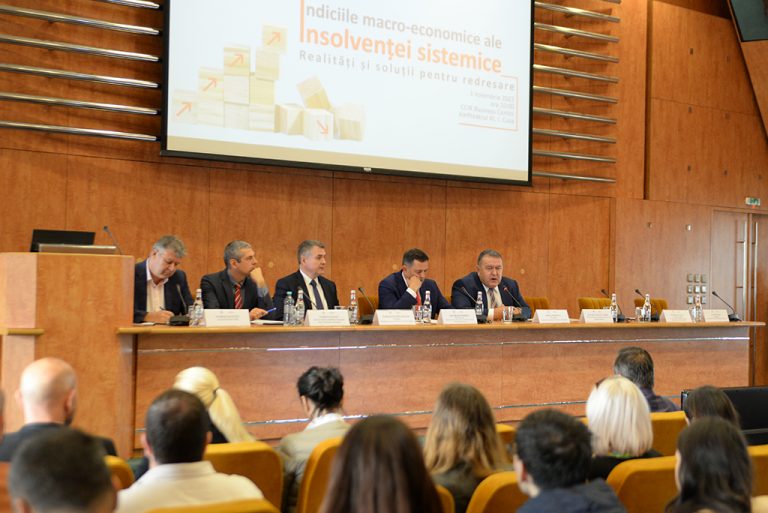Mihai Daraban: At the end of 2022, Romania’s trade balance deficit could cross the threshold of 30 billion euros
Publicat pe 03/11/2022
Bucharest, November 3, 2022: The Chamber of Commerce and Industry of Romania (CCIR) and SCA Piperea si Asociații, in partnership with RomInsolv SPRL, organized on Thursday, November 3, the conference “Macro-economic indicators of systemic insolvency. Realities and solutions for recovery”.
The event had as its central theme the identification of solutions in terms of consolidating or increasing the liquidity of companies to avoid insolvency, as well as ways of financial recovery of SMEs and large enterprises in difficulty.
“Insolvency is an important topic on the public agenda, or should be an important topic. Unfortunately, the famous Ministry of Entrepreneurship and Tourism, which consists of one minister and five secretaries of state, is not here, although it was invited. They probably think they don’t have to attend this event. Returning to the topic of the conference, we are talking about 4767 insolvencies at companies and PFAs in the first nine months of 2022. We have champion counties from this point of view and, obviously, coda counties. In first place is Bucharest with 827 insolvencies, followed by Bihor – 299, Cluj with 256, The fewest cases of insolvency are in Harghita and Covasna, with 24 and 23. By economic sector, there are 1290 insolvencies in wholesale trade, 290 in constructions and 612 in the manufacturing industry. Romania ended 2021 with imports of 98.4 billion euros and a trade deficit of 23.8 billion euros. Romania’s trade balance deficit could exceed the 30 billion euro threshold this year. Our country can no longer afford to tilt the trade balance in its favor with raw materials. We need investments in production lines that export products with high added value”, said the president of the CCIR, Mr. Mihai Daraban.
“We live in an era full of destruction. Simple people are impoverished, SMEs barely have air left to survive, to breathe, large enterprises are difficult to sustain in the market because of energy prices. Inflation announced by INS and BNR already exceeds 16%; I understand, however, that the inflation experienced in food is over 27%, and the purchasing power decreases, which leads to over-indebtedness, which causes, from a macroeconomic point of view, not only a decline in consumption, but also causes people to refrain from to consume more. People no longer make plans, not even city breaks, nor to buy a house or a car. Merchants sell less, manufacturers produce less, they need less human resources and jobs, which leads to a high unemployment rate and which can lead to stagflation, where we will no longer be able to talk about any growth fluctuating in W, as the impression was created at the end of the pandemic. Reducing the consumption of natural persons is an extremely serious macroeconomic problem and I do not know the reason why the authorities do not take measures to increase purchasing power”, said lawyer Gheorghe Piperea, Managing Partner, Piperea si Asociaţii.
Phone: 0374474373; 0213190085
e-mail: bcp@ccir.ro



